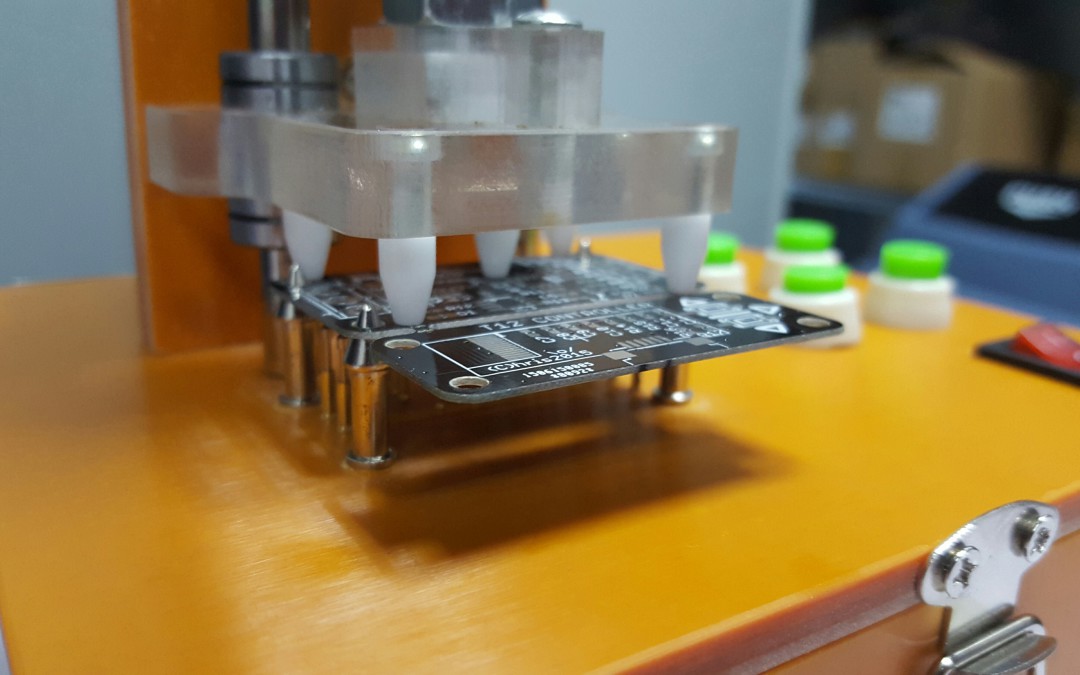You start with a great idea and you finally managed to get one or two prototypes made, you are feeling great. Next you show it to your friends and get them excited too. You decided to built them your product too and since you received a couple of PCBs extra that isn’t a problem. Later on you show it to people in your local hackerspace and you are getting even more orders. After a while you decide to get it manufactured abroad (China for example) as you don’t have time to fulfill all the orders. To scale the manufacturing up from one or two products to many more involves lots of more planning and thinking. At some point all your PCBs run assembled from the assembly line, but they aren’t programmed nor tested. You don’t want your friends and customers test and program your product, don’t you?
During the design I started thinking how to help the people that going to program and test my product. At that time I made sure the ICSP (in circuit serial programming) pins were easily accessible and I added a fairly straight forwarded test-routine in the firmware that is called by shorting a couple of pins. When the pins are shorted during boot-up the test-routine is called if not the normal program is executed. Next the instructions for the tester are displayed on the display. All the features of the product are tested and the product is ready to be sold when all the tests are fully done. I tried to keep in mind the tester probably doesn’t know anything about my product so the instructions need to be perfectly understandable and clear for a ‘n00b’. I tried to think of every possible scenario what can go wrong in the production and what will then the test-result be. Then wrote the instructions down which components to check if a particular test fails.
 In china a dedicated test rig is built for small runs (<10K) for each product. They are made to quickly insert the assembled board, and make the test connections, flip a few switches and decide whether the PCB is assembled ok. The fixture has little springy pins, called pogopins. These pogopins are seated in a socket as the spring will loose its tension quickly after a few hundred insertions. The rigs and sockets are however built to last a few tens thousands of insertions.
In china a dedicated test rig is built for small runs (<10K) for each product. They are made to quickly insert the assembled board, and make the test connections, flip a few switches and decide whether the PCB is assembled ok. The fixture has little springy pins, called pogopins. These pogopins are seated in a socket as the spring will loose its tension quickly after a few hundred insertions. The rigs and sockets are however built to last a few tens thousands of insertions.
To get one made is a mather of sending the gerbers or a PCB to the rig guys and wait a few days. They probably have some premade designs for various PCB sizes and use of the shelve hinges, press arms, retaining clips to quickly assemble one. Price is around 100USD for small size boards (5x5cm). If you want to play with those nice pogopins my friend Ian has them for sale here 🙂
I used flylin.co to get the soldering iron controller manufactured, they also have this rig made. I asked them to make pictures during the built for your and mine viewing pleasure.



Trackbacks/Pingbacks